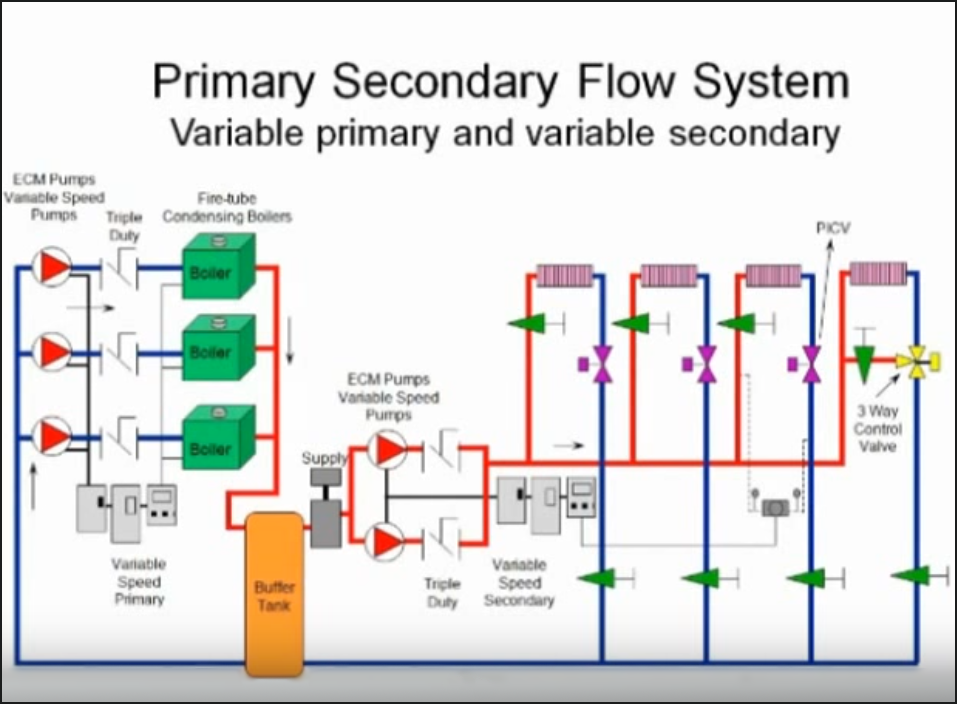Pump Motor Efficiency Series Part 3: Permanent Magnet Motors (PPMs)
/By Mark Bingham
Perhaps you’ve noticed articles or advertisements in trade publications touting the advantages of permanent magnet motors (PMMs.) PMMs use technology innovations to pursue the ever-increasing demands for electric motor efficiency.
The most noteworthy difference between electrically commutated motors (ECMs) and permanent magnet motors (PMMs) is that PMMs require external control and are available in larger horsepower ratings. Until recently, ECMs have primarily been used in fractional horsepower applications. Today, some manufacturers offer ECMs with outputs of up to 20 horsepower; however, motors larger than 10 horsepower are only available with external controllers.
PMM Efficiency, Affordability, and Durability
Like ECMs, PMMs use permanent magnets on the rotor. A controller powers the magnets on the stator to create a rotating magnetic field, which induces the rotor to turn. Small ECMs often use neodymium rare-earth permanent magnets; however, because PMMs are larger than typical ECMs, concerns regarding cost, sustainability, and temperature resistance dictate the use of permanent magnets for the rotor. Permanent magnets, typically made of ferrite, have a lower magnetic strength than neodymium magnets but are more readily available, cost less, and are more durable at higher temperatures. All this makes permanent magnets a good choice for PMM rotors. PMMs with ferrite magnets are typically referred to as ferrite-assisted synchronous reluctance (FASR) motors.
PMMs aren’t just more efficient than induction motors. They also have much higher power densities, allowing for significantly reduced frame sizes than induction motors with equivalent horsepower.
Figure 1 below shows the efficiency gains of FASR motors compared to ECM and induction motors. As mentioned in our previous article on ECM motors, the part-load (speed) efficiency improvements are likely to result in substantial operating cost savings since most HVAC pumps and fans operate at part load for most of their lives.
Figure 1: Comparison of Part Load Efficiencies of FASR, ECM, and Induction Motors (From ABB White Paper Designing for Optimum Energy Management: Selecting the Right Variable Speed Motor for HVAC Applications).
A Few PMM Caveats
There are a few key considerations to keep in mind when selecting PMMs.
Unlike induction motors, PMMs cannot start or operate on AC power and require a PPM-specific drive, which complicates conversion from an existing induction motor to a PMM.
Due to the temperature sensitivity of ferrite magnets used in many PMMs, operators should carefully monitor the rotor temperature to prevent permanent damage to the magnets.
Finally, the magnetic field within a PMM is always “on,” whether the motor is energized or not. If the motor shaft is exposed to any rotation—including rotation due to unintended water flow (e.g., when a check valve fails)—a PMM can create significantly high voltage. This poses a serious shock risk to anyone who handling or servicing the motor at the time. Locking the shaft to prevent rotation is recommended to eliminate this hazard during motor service.
Recent FASR Introductions
The reliability, high efficiency, simplicity, and compact size of FASR motors make them ideal for pump and fan applications. Bell & Gossett recently introduced the Hydrovar X series of pumps, utilizing FASR motors with controllers specifically designed for pump operations. Baltimore Aircoil has been utilizing FASR motors in their ENDURADRIVE direct drive fan systems for cooling towers for several years.
In our next post, we'll discuss smart pumps developed with ECMs that have integrated controls and PMM controllers.



